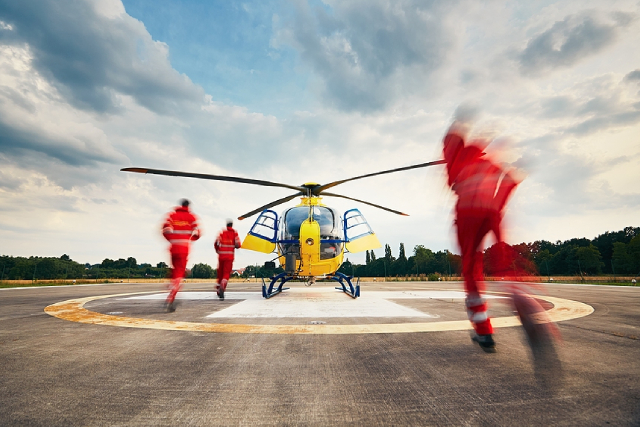
Riding in an air ambulance might not be something you’ve ever thought about. After all, it’s not exactly the kind of flight you book in advance, like a vacation. But if you’re planning a trip where there’s a possibility of needing medical transport – whether for an existing condition, an adventure that carries risks, or simply peace of mind – it’s good to be prepared. Knowing what to expect can help reduce anxiety and make your experience smoother.
An air ambulance flight is designed to provide medical care in the sky, ensuring that patients receive the necessary treatment while being transported quickly and safely. Whether it’s a planned medical transfer or an emergency evacuation, understanding how the process works can help you feel more at ease. Here’s a breakdown of what to expect on your first air ambulance flight.
1. The pre-flight process
Before you even board the aircraft, a lot happens behind the scenes to ensure your flight goes smoothly. A medical team evaluates your condition, reviews your medical history, and determines the best way to transport you safely.
If you’re in Singapore and require an air ambulance, the coordination process will involve hospitals, insurance providers, and the air ambulance company. The logistics team ensures that all necessary travel documents are in place, including visas and medical clearances if required.
One factor that many people consider is the air ambulance cost. The cost varies depending on the distance, the medical team required, and the type of aircraft used. While it can be expensive, insurance policies may cover some or all of the expenses, so checking with your provider beforehand is advisable.
2. Boarding the aircraft
Unlike commercial flights, boarding an air ambulance is a quick and structured process. You’ll be transferred to the aircraft either by stretcher, wheelchair, or with assistance from the medical crew, depending on your condition. The cabin is equipped with medical supplies, monitoring equipment, and life-support systems similar to what you’d find in an intensive care unit.
Family members may sometimes be allowed to accompany the patient, depending on the aircraft’s capacity and medical needs. If a companion is permitted, they’ll receive a briefing on safety procedures and their role during the flight.
3. In-flight care and comfort
Once airborne, the medical team continuously monitors your condition. The flight crew and medical personnel work together to ensure a smooth ride while administering necessary treatments. If medications, oxygen, or IV therapy are needed, they will be provided onboard.
Unlike commercial flights, an air ambulance is designed for comfort and care. The noise level might be higher due to the smaller aircraft, but noise-cancelling headsets or earplugs are often provided. The seating and stretcher arrangements ensure that the patient remains as comfortable as possible throughout the journey.
You won’t find traditional in-flight entertainment, but if you’re conscious and able to communicate, the crew will do their best to keep you informed and reassured. Some flights allow personal items like phones or tablets, so you can listen to music or watch something to pass the time.
4. Safety precautions
Every air ambulance flight prioritises safety. The pilots and medical staff are trained to handle medical emergencies mid-air, and the aircraft is equipped to deal with a range of situations. Turbulence may feel different in a smaller aircraft, but rest assured that the flight crew is experienced in navigating such conditions.
For patients travelling long distances, mid-flight refuelling stops may be necessary. During these stops, medical teams may reassess the patient’s condition and provide additional care as needed.
5. Arrival and handover
As you approach your destination, the medical team coordinates with the receiving hospital or medical facility to ensure a seamless transfer. Ground transportation is typically pre-arranged, meaning an ambulance will be waiting to take you to the hospital upon landing.
The handover process is thorough, ensuring that the receiving medical team is fully informed of your condition, treatment provided during the flight, and any next steps. If your family or caregivers are meeting you at the hospital, they will be updated on your arrival time and condition.
Essential things to keep in mind
- Packing essentials: If possible, bring personal identification, medical documents, and any necessary medication in a clearly labelled bag.
- Insurance coverage: Understanding your insurance policy and whether it covers air ambulance costs can prevent financial stress later on.
- Travel risks: If engaging in adventurous activities such as skydiving in another country, consider adding medical evacuation coverage to your travel insurance.
- Communication: Stay informed about the process by asking questions to the medical team – they’re there to help and reassure you.
Conclusion
Taking an air ambulance may not be part of your travel plans, but knowing what to expect can make a big difference if the need arises. From pre-flight coordination to in-flight care and a seamless handover, medical air transport is designed to provide safety and comfort for patients requiring urgent care.
For those who need reliable medical evacuation and repatriation services, EMA Global offers top-tier air ambulance services to ensure that patients receive the best care while travelling. Whether you require emergency transport or a planned medical transfer, EMA Global is committed to getting you where you need to be safely and efficiently.

